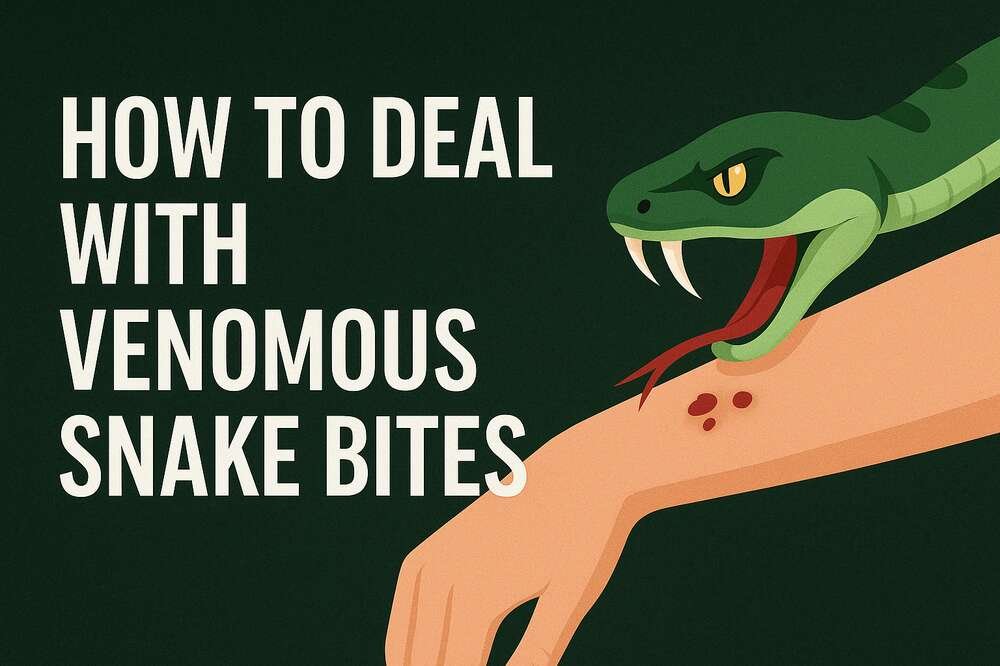What Should You Do If You Are Bitten by a Venomous Snake? – How to Overcome Venomous Snake Bites How to Deal with Venomous Snake Bites
Being bitten by a venomous snake can be frightening, and can make people react in the wrong way: They may panic, try to catch or kill the snake, or apply ice or a tourniquet to the wound, which can be disastrous in certain situations. Read how to deal with Venomous snake bites below.
So, how should a person respond to a bite? And what happens in the human body when a person is bitten by a venomous snake?
“The first thing to do is stay away from the snake – don’t try to catch it, it will only give the potential for more people to get hurt,” said Dr. Nicholas Kman, professor of emergency medicine at The Ohio State University Wexner Medical Center.
1. Stay calm and don’t panic. Try to remember the shape, size and color of the snake. Immediately call the ambulance number (118 or 119) if you know that the snake is a venomous snake and makes the victim difficult to breathe and lose consciousness
2. Don’t move around a lot. to keep the part of your body that has been bitten as possible to prevent the poison from spreading throughout your body.
3. Remove jewelry and watches from bitten limbs. Because it can squeeze your skin if the limb swells.
4. Do not try to take off any clothes. But loosen clothing if possible seek immediate medical attention.
5. Do not try to suck the poison out of the bite. This is one way to deal with snake bites, because you don’t know if the snake is venomous or not.
6. Do not try to cut the skin from a snake bite. Or make it bleed. This is the 6th way to deal with snakebite that you must remember.
7. Do not rub anything into the wound. Do not also or apply ice, heat or chemicals.
8. Do not leave someone who has been bitten by a snake alone. Watch and talk to the person until emergency help arrives. This is one way to deal with snake bites.
9. Do not place anything around the bitten limb to stop the venom from spreading (such as a pressing bandage). Because it won’t help, and can cause swelling or make it worse; it can also damage limbs, leading to the need for amputation.
10. Do not try to catch or kill the snake.
When the medical staff arrives, the victim will be given anti-venom treatment. In addition, can also be given a tetanus shot. This first aid means a lot to save the victim. You need to remember the steps above, yes.
Painted Bronzeback (Dendrelaphis Pictus) A Non Venomous Snakes in Southeast Asia and India
Sources: PinterPandai, NHS (UK), Web MD
Photo powered by chatGPT



